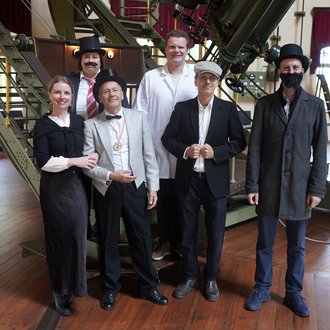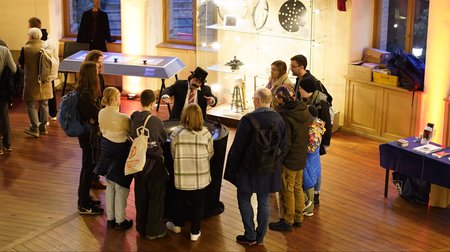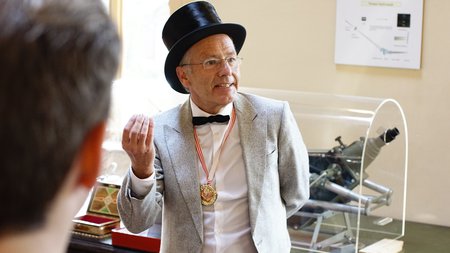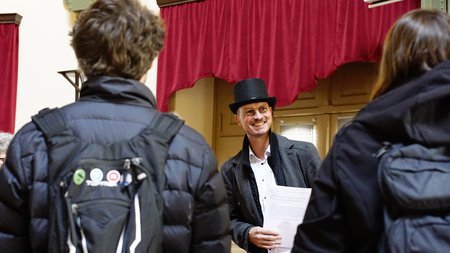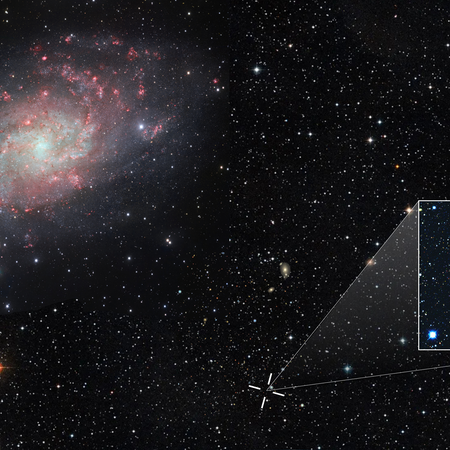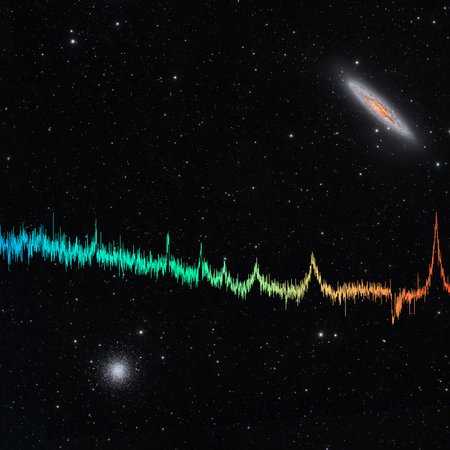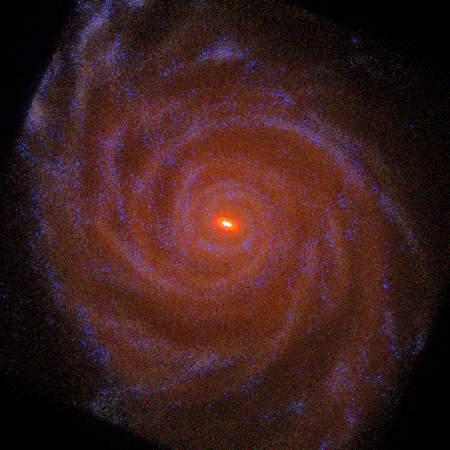„Lange Nacht der Astronomie“ in the Great Refractor
On Saturday, October 19, 2024, the “Lange Nacht der Astronomie” took place in the Great Refractor. The event attracted astronomy enthusiasts young and old to the Telegrafenberg. A mixture of scientific knowledge and historical theater created a unique atmosphere that made the fascination of astronomy tangible.
At four stations, historical figures, played by AIP employees, took the audience on a journey through time. The personalities included Maria Margaretha Kirch, the famous astronomer of the 18th century, Johannes Hartmann and his senior assistant, Hermann Carl Vogel, the astrophysicist Karl Schwarzschild and Ejnar Hertzsprung. Johann Gottfried Galle, who became famous for his discovery of Neptune, and his assistant at the telescope were also part of the team.
A total of 200 visitors took part in the interactive guided tours between 4 and 10 pm. The event offered guests a unique mix of science and historical theater. In four guided tours of 50 people each, the scientists led the visitors through stations on topics such as the phases of the moon, spectroscopy, telescope observation and black holes.
On Saturday, October 19, 2024, the “Lange Nacht der Astronomie” took place in the Great Refractor. The event attracted astronomy enthusiasts young and old to the Telegrafenberg. A mixture of scientific knowledge and historical theater created a unique atmosphere that made the fascination of astronomy tangible.
At four stations, historical figures, played by AIP employees, took the audience on a journey through time. The personalities included Maria Margaretha Kirch, the famous astronomer of the 18th century, Johannes Hartmann and his senior assistant, Hermann Carl Vogel, the astrophysicist Karl Schwarzschild and Ejnar Hertzsprung. Johann Gottfried Galle, who became famous for his discovery of Neptune, and his assistant at the telescope were also part of the team.
A total of 200 visitors took part in the interactive guided tours between 4 and 10 pm. The event offered guests a unique mix of science and historical theater. In four guided tours of 50 people each, the scientists led the visitors through stations on topics such as the phases of the moon, spectroscopy, telescope observation and black holes.
Images
Big screen size [1000 x 713, 140 KB]
Original size [2930 x 2091, 920 KB]
Big screen size [1000 x 561, 80 KB]
Original size [3008 x 1688, 470 KB]
Big screen size [1000 x 562, 120 KB]
Original size [6000 x 3376, 2.2 MB]
Big screen size [1000 x 561, 120 KB]
Original size [3008 x 1688, 790 KB]
Big screen size [1000 x 562, 80 KB]
Original size [6000 x 3376, 2.3 MB]
Big screen size [1000 x 562, 60 KB]
Original size [6000 x 3376, 1.4 MB]
Big screen size [1000 x 562, 80 KB]
Original size [6000 x 3376, 3.3 MB]
Big screen size [1000 x 562, 90 KB]
Original size [6000 x 3376, 2.1 MB]
Big screen size [1000 x 562, 60 KB]
Original size [6000 x 3376, 1.5 MB]

